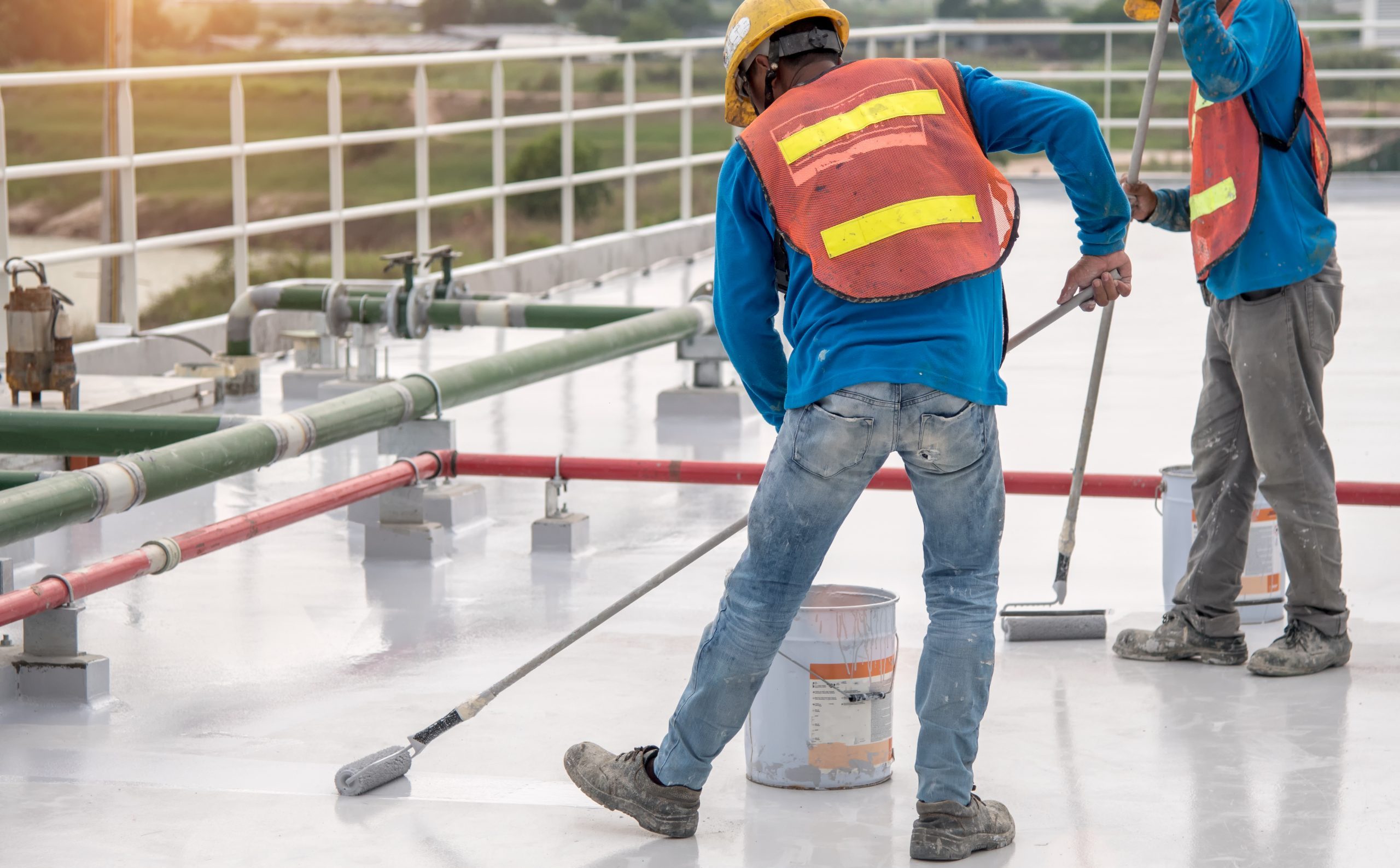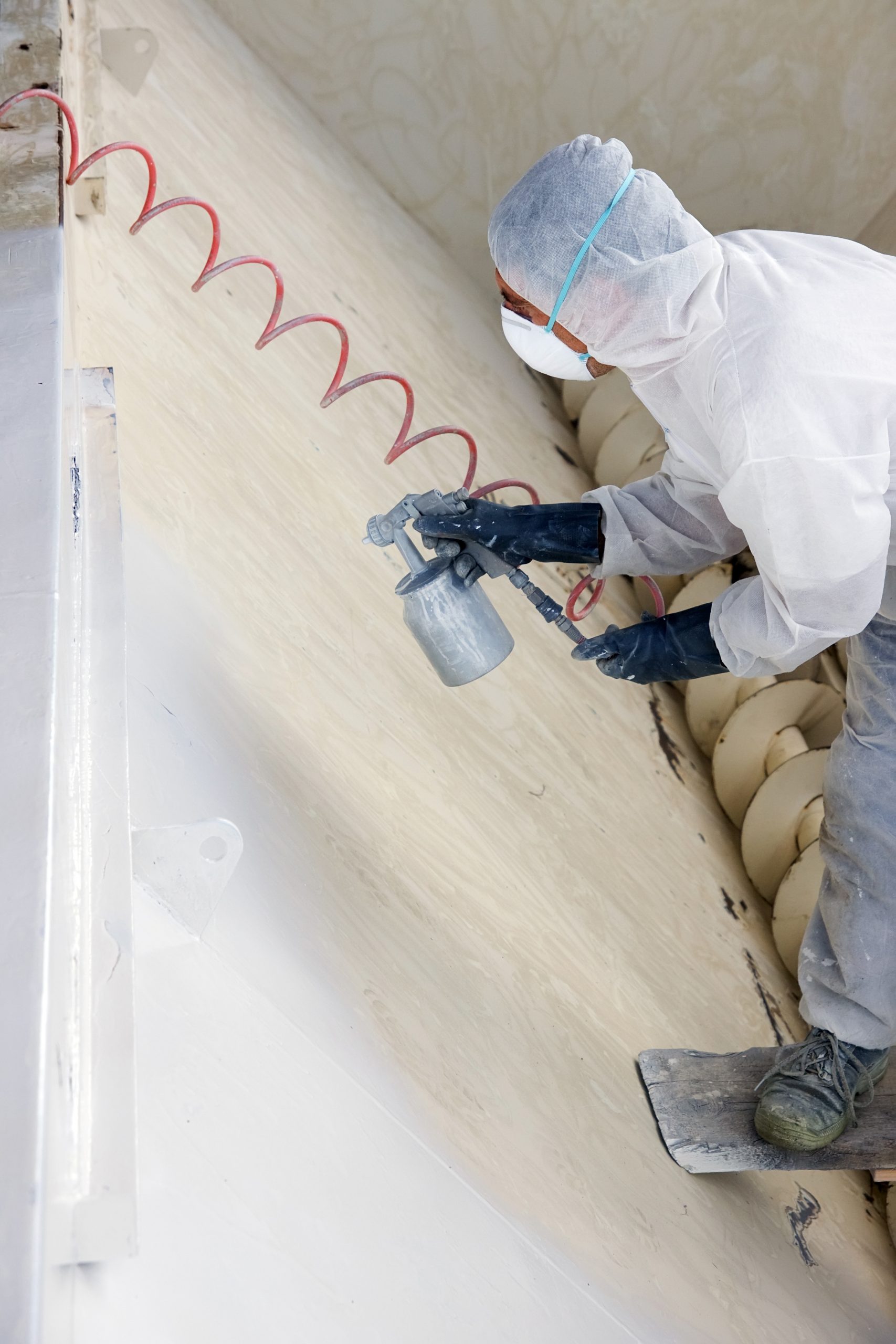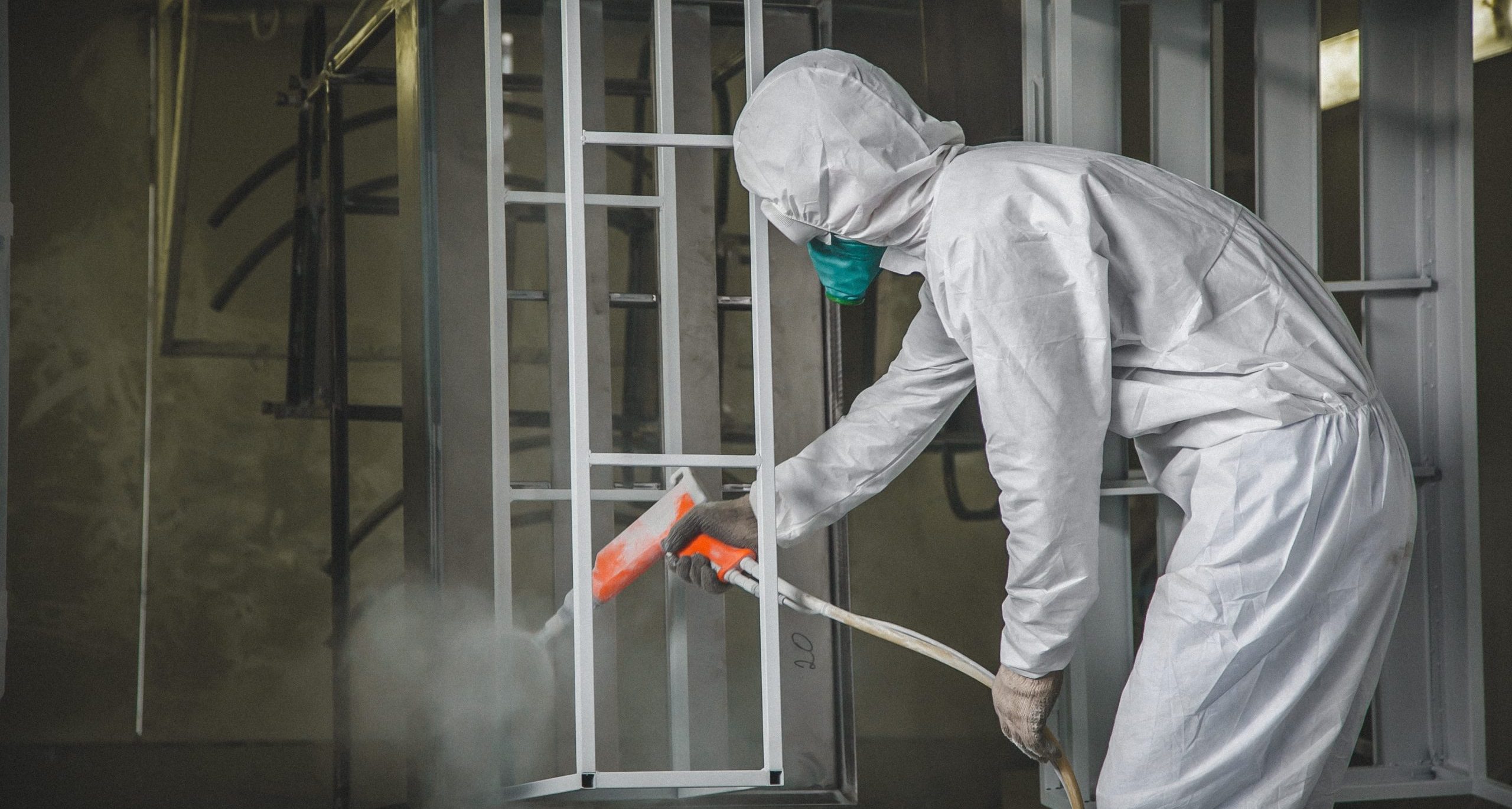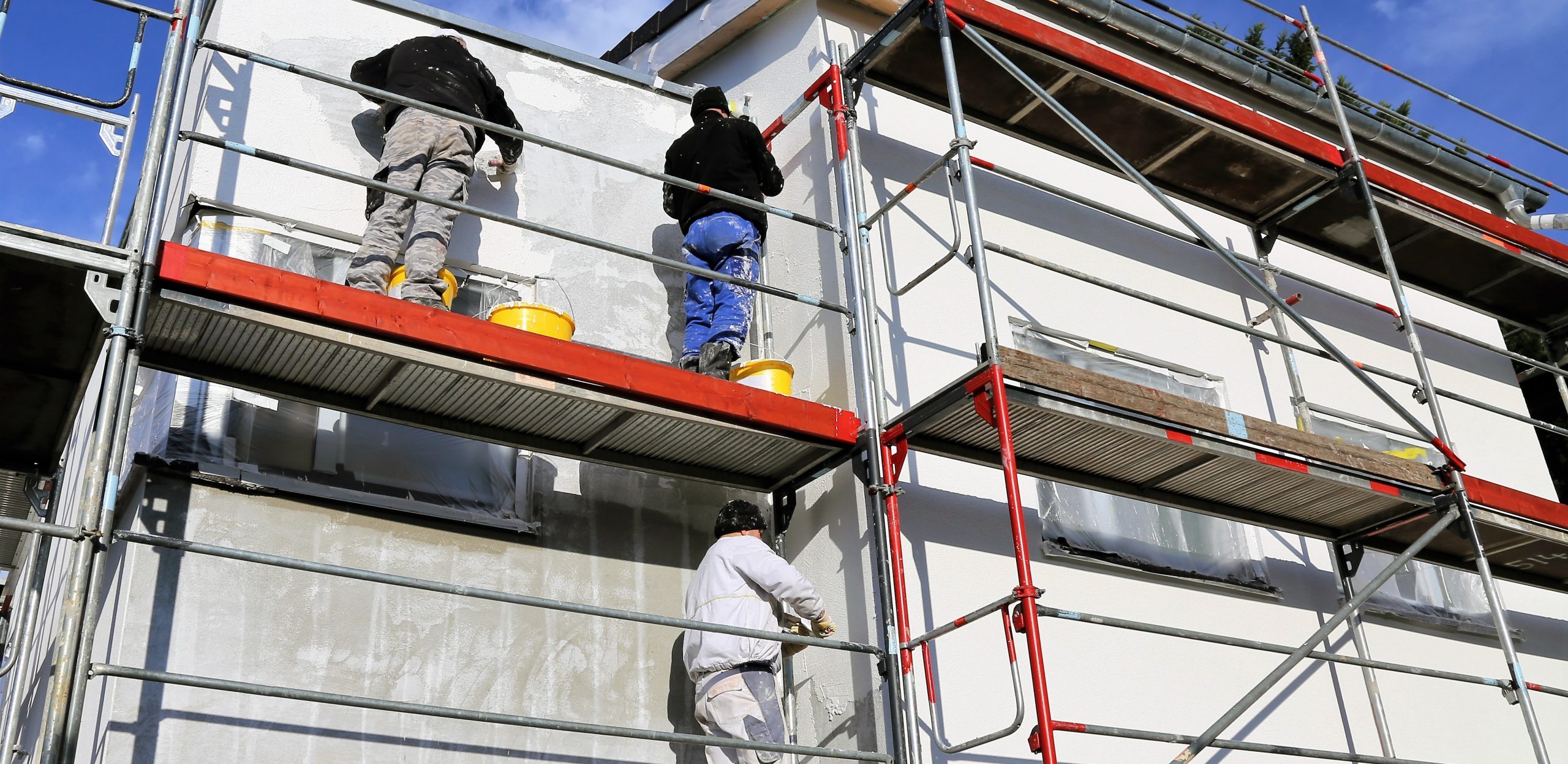Painters and Mesothelioma
Painters are tradespeople involved in the application of pigmented liquids that dry to a durable film over various types of surfaces (these liquids provide protection from sun, wind, water, dirt, or indoor and outdoor pollutants; they also enhance the appearance of the surfaces to which they are applied).
The nearly 400,000 people currently drawing a paycheck as a construction or maintenance painter work with many types of materials. However, quite a few of the materials made between the 1940s and the 1970s posed a health risk to painters.
The materials giving rise to this risk had one thing in common. They all contained the carcinogenic mineral asbestos, which has been scientifically demonstrated to cause diseases that include mesothelioma, asbestos lung cancer, and asbestosis.
The list of mid-20th Century materials containing asbestos is long.
The problem with materials that contain asbestos is this. Under certain circumstances or conditions, tiny bits of asbestos can break free from the material or product into which the mineral has been added and then enter the air.
The likelihood of a painter inhaling or ingesting some of those airborne asbestos particles was, until perhaps the 1990s, quite substantial.
It is after the asbestos is breathed or swallowed that mesothelioma or other asbestos diseases can appear.
The good news is that materials makers stopped putting asbestos into their products in the 1970s after there was a public outcry about the dangers of the mineral.
The bad news is that it was not until the 1980s that most inventories of materials containing asbestos were fully depleted and no longer available on the market.
Even so, asbestos materials can to this very day be encountered by painters if they work in structures built pre-1980s. Typically what happens is a painter will be brought in to remodel, renovate, or retrofit a property erected during the heyday of asbestos use. In the course of removing old paint and roughing up surfaces in preparation of applying new, asbestos-free paint, the asbestos contained in the old paint and materials will be knocked loose and go airborne (unless proper precautions are taken).
Fortunately, in the event an asbestos disease develops after exposure to asbestos, medical help is available. So is legal help, which painters injured by asbestos exposure are entitled to receive so that they may seek financial compensation from the companies responsible for the harm.

Who qualifies as a painter?
Tasks typically undertaken by painters include:
- Installing scaffolding
- Protecting surfaces by laying drop cloths, tarps, and masking tape
- Unscrewing or prying off covers from electric outlets and switches
- Applying putty or plaster to filling holes and cracks in surfaces prior to painting
- Scraping, wire brushing, or sanding surfaces
- Brushing, rolling, or spraying paints onto prepared surfaces
- Cleaning up dried blobs of paint from tools and work areas
Painters and asbestos exposure

Among these products were:
- Paint
- Sealer
- Primer
- Stain
- Varnish
- Spackle
- Joint compound
- Plaster
Adding asbestos to paint, stain, and other liquid coatings helped thicken the product. This improved how easily and smoothly it laid down when applied to a surface. Asbestos also gave the product better texture, brighter color, more durability, and greater resistance to fading or peeling with age.
Asbestos was also added to help coats dry faster. Further, these coatings helped the walls and ceilings to which they were applied stay cool when the weather turned hot as well as warm when the outside temperatures dropped.
Asbestos became a health risk to painters not so much while the paint was wet. It was once the product dried that the dangers materialized in full.
The reason wet asbestos paint posed scant risk to health was that molecules of asbestos were so tightly bonded to the paint’s chemical composition that they could not break free. Dried asbestos paint was another matter entirely. Under the right conditions, asbestos molecules could easily separate from those of the paint.
Typically, asbestos molecules would break free if dried paint were sanded—even lightly—as is customarily done to ensure adhesion and smoothness of a fresh coat added over one laid earlier.
Much more asbestos would break free if old paint were to be scraped or peeled.
Another way asbestos could separate was if blobs of paint that fell on a drop cloth dried and the cloth were then to be folded up for storage or repositioning in another location. The act of folding would bend and crack some of the dried paint blobs. Much the same thing would happen were dried asbestos paint to be chiseled off a bucket, pan, or other painter’s tool.
By whatever means asbestos was induced to separate from the paint’s chemical matrix, tiny bits of the mineral would almost invariably end up in the air breathed by painters.
Asbestos entering a painter’s body through the nose during inhalation (or mouth if the asbestos were instead swallowed) usually became permanently embedded within the lungs (or intestines). In some cases, these trapped asbestos particles caused radical changes in the composition and functioning of healthy cells. In turn, those changes opened the door to the onset of mesothelioma, asbestos lung cancer, asbestosis, or other asbestos-related disease many long years later.

Painters and asbestos exposure from building materials
These non-painter building materials included:
- Drywall
- Insulation
- Ceiling and floor tiles
- Roofing systems
- Electrical systems
- Pipes
- Boilers and furnaces
- Bricks and mortar
Between the 1940s and 1970s, manufacturers of these products added asbestos make them lighter and stronger. Asbestos also made them better able to absorb noise, insulate against extreme heat and cold, and prevent or inhibit the spread of fire.
When these materials were disturbed by cutting, hammering, drilling, grinding, sanding, or mere jostling, some of the asbestos within them could escape into the air.
Thus released, it was possible for small particles of asbestos to travel into the painter’s lungs or intestines. From there, the asbestos would deeply penetrate into those organs and stay permanently locked within.
Harmful changes to the cells that line the lungs and the abdominal cavity might begin and continue for decades. The result might eventually be mesothelioma, asbestos lung cancer, asbestosis, or another asbestos-related condition.
Painters and asbestos exposure from power tools
Power tools made between the years 1940 and 1970 contained asbestos inside their motor housings to keep heat from burning the operator and to keep internal components from melting or otherwise becoming damaged.
As these tools were operated, some of the asbestos inside was able to break free. A portion of that freed asbestos immediately found its way into the air. The remainder stayed inside the tool body but could be expelled were the shell to be opened for servicing.
Power tools could also release asbestos by coming into contact with materials or structural elements carrying one or more coats of dried asbestos paint. For example, say there was an overhead hanging fan that needed to be removed in order to permit repainting of the ceiling tile to which the fan was fastened. To remove the fan, the screws securing it to the tile would need to be extracted. A power screwdriver could do this. However, the torque generated by the tool could be of sufficient intensity to disturb asbestos within the old paint as the screws were taken out, thereby causing asbestos in the old paint to break free and begin floating in the air.
Asbestos in the air can remain there for a long time before it settles. While airborne, there exists the possibility that some asbestos particles will be breathe or swallowed. The particles then become trapped in the lungs or intestines. Many years later, the asbestos causes potentially significant damage to the healthy cells comprising the lining of the chest wall or abdominal cavity. These damaged cells are supposed to self-destruct, but the changes wrought by asbestos exposure sets in motion a sequence of biological events preventing those cells from terminating themselves. Instead, they live on and mutate into cancer or some other disease-state harmful to the health of the body.
Painters and asbestos exposure from working alongside other trades
Painters who work in tandem with electricians, plumbers, bricklayers, insulators, and others on the same project tend to be affected to some extent by the occupational hazards specific or unique to those trades.
Take drywall for example. A painter could be scheduled to begin work two days after the drywall crew finished cutting and installing sheetrock, applying joint tape, laying down mud, and sanding it to a smooth finish. By the end of the drywalling process, the volume of asbestos particles in the air could be considerable. And those particles would still be there when the painter showed up to begin work 48 hours later.
Unfortunately, the painter in this scenario might not have realized asbestos was being inhaled (or ingested). Asbestos particles are difficult to see because they are so tiny. Thus, the entire time the painter worked on this project, a double-dose of asbestos was penetrating and loading up within vital bodily organs—asbestos from the paint and asbestos from the drywalling.
There would be a chance that this indrawing of asbestos particles might ultimately produce a disease such as mesothelioma, asbestos lung cancer, or asbestosis. However, the painter in this illustration perhaps would not immediately make the connection between exposure to asbestos and disease onset for the reason that asbestos diseases have extraordinarily long latency periods (meaning, the disease usually does not develop until years or even decades have passed).

Painters’ rights to compensation after asbestos exposure
Consequently, an asbestos-exposed painter who is stricken with mesothelioma or another asbestos disease may be entitled to compensation for the harm done.
Loved ones of painters who contracted mesothelioma or one of the other asbestos diseases might also be entitled to compensation.
Compensation, if obtained, can be used to pay medical bills, make up for wages lost after the disease makes working impossible, and more.
One way that compensation can be obtained is by suing the companies responsible for exposing painters to asbestos. Such companies could include the makers, distributors, and retailers of asbestos paints and related products.
Lawsuits can end before there is a verdict, however. Ideally, it ends with the defendant company or companies agreeing out-of-court to pay the plaintiff painter a substantial sum. This remedy is known as settlement. Many parties to an asbestos lawsuit prefer to settle rather than go through a full-blown trial in order to save time and money.
However, some asbestos companies cannot be sued, so there is no possibility of either settlement or verdict. The reason they cannot be sued is that they have filed for bankruptcy. Even so, they remain obligated to compensate painters for the harms resulting from asbestos exposure. A special claims system exists for those who seek compensation from bankrupt asbestos companies.

About the author…
Chris T. Layloff was raised in the steel town of Granite City, Illinois. He graduated from Saint Louis University with a dual-degree in finance and economics in 2005, and received his J.D. from Saint Louis University School of Law in 2008.